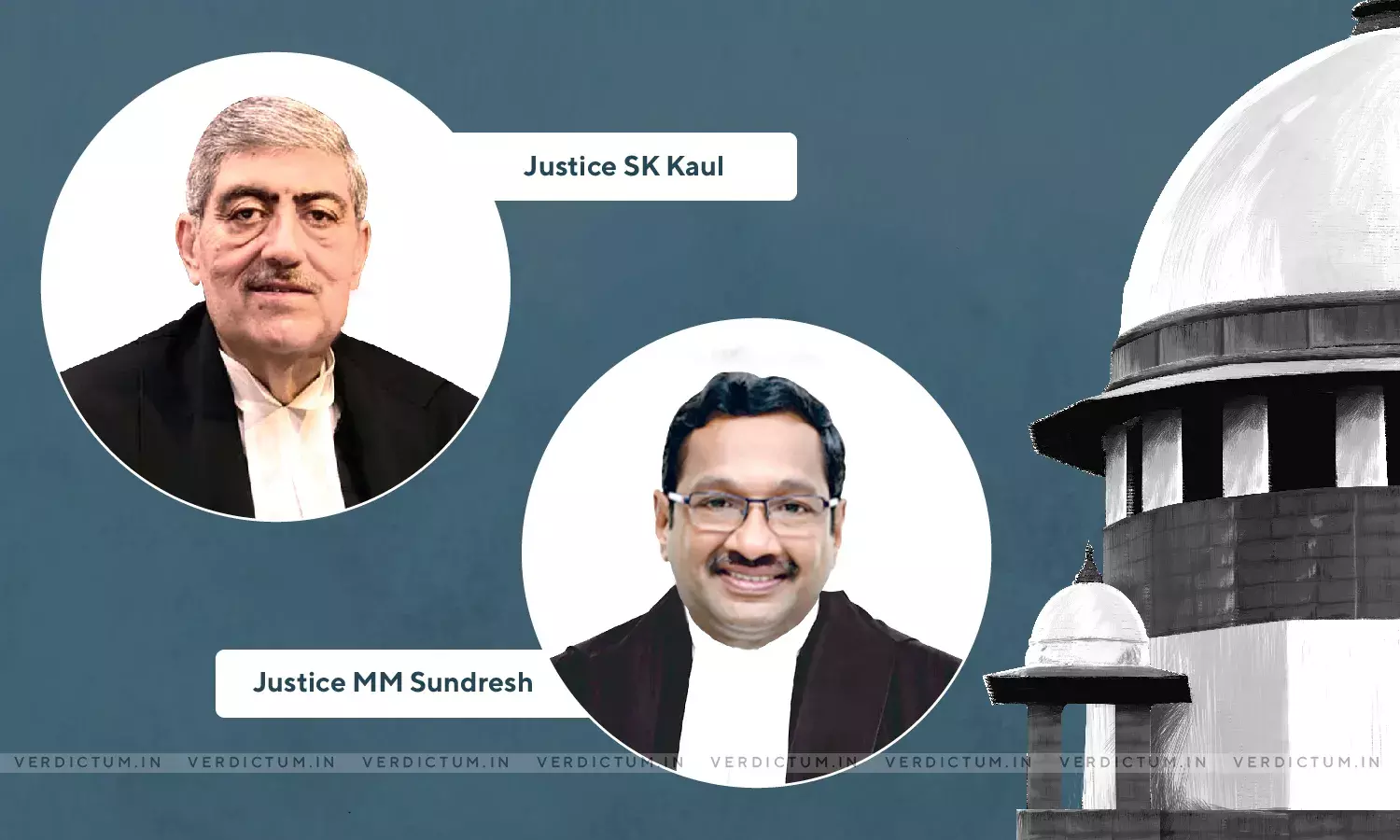Court Must Guard Against Possibility Of Convicting Passive Onlookers Without Common Object Of Unlawful Assembly: Supreme Court

A two-judge Bench of Justice SK Kaul and Justice MM Sundresh has held that the Courts must guard against the possibility of convicting mere passive onlookers who did not share the common object of the unlawful assembly under Section 149 of the Indian Penal Code.
The Bench, while acquitting a person charged for murder held that merely because a person pointed out where the victim was hiding to the unlawful assembly, found that he cannot be held guilty of sharing the common object with the latter.
KNMP Law appeared for the Appellant during the proceedings before the Court.
An appeal was preferred by the Appellant-Accused who was charged under Sections 147/148/324/302/201 read with Section 149 of the IPC before the Supreme Court. The Appellant-Accused's sentence of life imprisonment was upheld by the Gauhati High Court. It was alleged by the Appellant that the role assigned to him was only of having pointed out the house where the victim was hiding.
In this case, a house was being constructed on the land of the victim and others, when the accused persons came in a mob towards the house of the victim carrying deadly weapons. The victim tried escaping by taking shelter in the house of Shorab Ali however, he could not succeed and a mounted assault was made on him.
The Sessions Judge convicted all the 32 accused and sentenced them to life imprisonment including the Appellant.
The Appellant contended before the Supreme Court that the mere fact that the Appellant was not brave enough to conceal where the victim was hiding did not make him a part of the unlawful assembly.
While relying on the judgment in Subal Ghorai v. State of West Bengal, the Appellant argued that constructive liability cannot be stretched to lead to the false implication of innocent bystanders.
The Apex Court held that the testimony of PW8 could not be believed since he was not a witness who had seen the incident, he only believed what others said and narrated the same. In this context, the Bench opined –
"Thus, the reliance placed in the impugned judgment on the testimony of PW-8 to rope in the appellant under Section 149 of the IPC cannot be sustained. This is more so as PW-7 is also a hostile witness."
Further, the Court held, "The Court must guard against the possibility of convicting mere passive onlookers who did not share the common object of the unlawful assembly. There must be reasonable direct or indirect circumstances which lend assurance to the prosecution case that they shared common object of the unlawful assembly."
"Not only should the members be part of the unlawful assembly but should share the common object at all stages. This has to be based on the conduct of the members and the behaviour at or near the scene of the offence, the motive for the crime, the arms carried by them and such other relevant considerations," the Court observed.
The Court also held that since the Appellant was not carrying any weapon and did not assault anybody, the finding of him accompanying the mob was not sustainable on the basis of the evidence.
"The only evidence of his involvement is that he pointed to the house where the victim was hiding. Given that a murderous mob fully armed was 7 hunting for him, the appellant at best can be said not to be brave enough to conceal the deceased or even to have not pointed out where he was, but that by itself cannot rope in the appellant under Section 149 of the IPC," the Bench held.
The Court found that the house of the Appellant was near the house of the deceased and that explained his presence at the place of occurrence.
The Court while relying upon the precedents Ranjit Singh v. State of Punjab and Ors. and C. Magesh and Ors. v. State of Karnataka opined that the eye witnesses require a careful assessment and their testimony must be evaluated for its credibility.
"We cannot, thus, say that by any stretch of imagination the case against the appellant has been proved beyond reasonable doubt or for that matter really no case seems to have been proved against the appellant given the role assigned to him in the testimony of the witnesses. In our view the appellant is entitled to a clean acquittal in the given facts," the Court asserted.
In the light of these observations, the Court set aside the conviction of the Appellant and allowed the appeal with a direction to release the Appellant.

